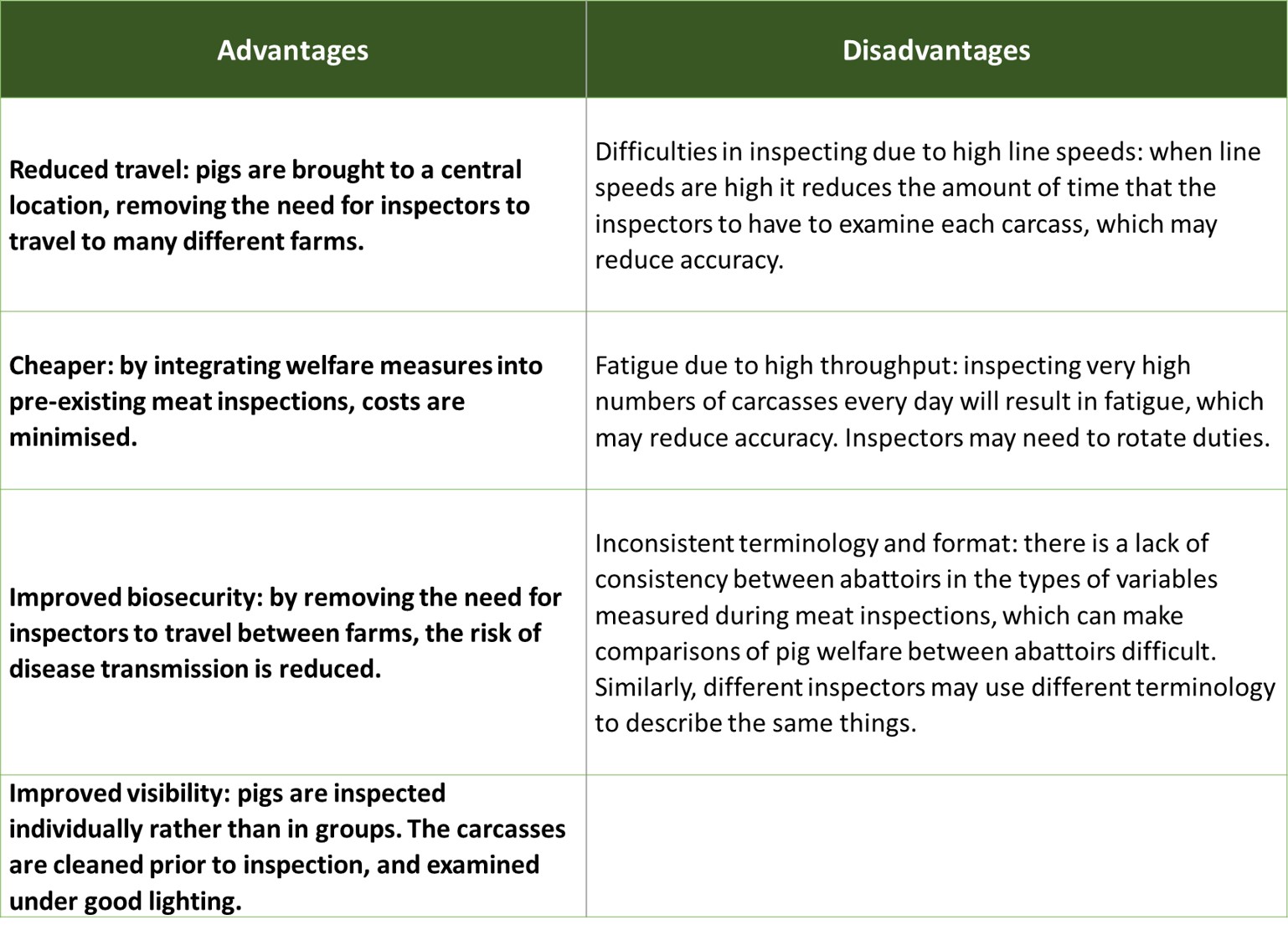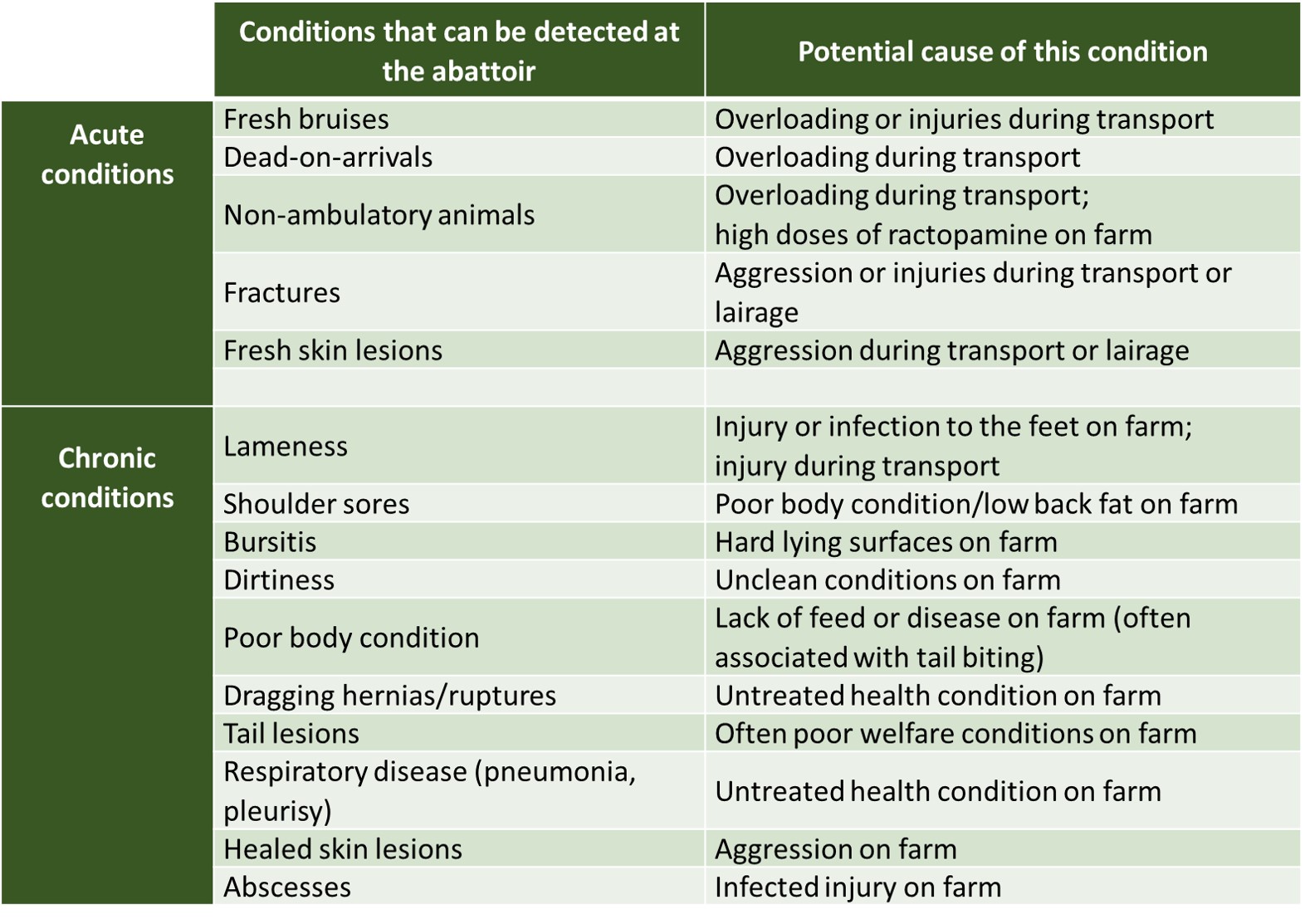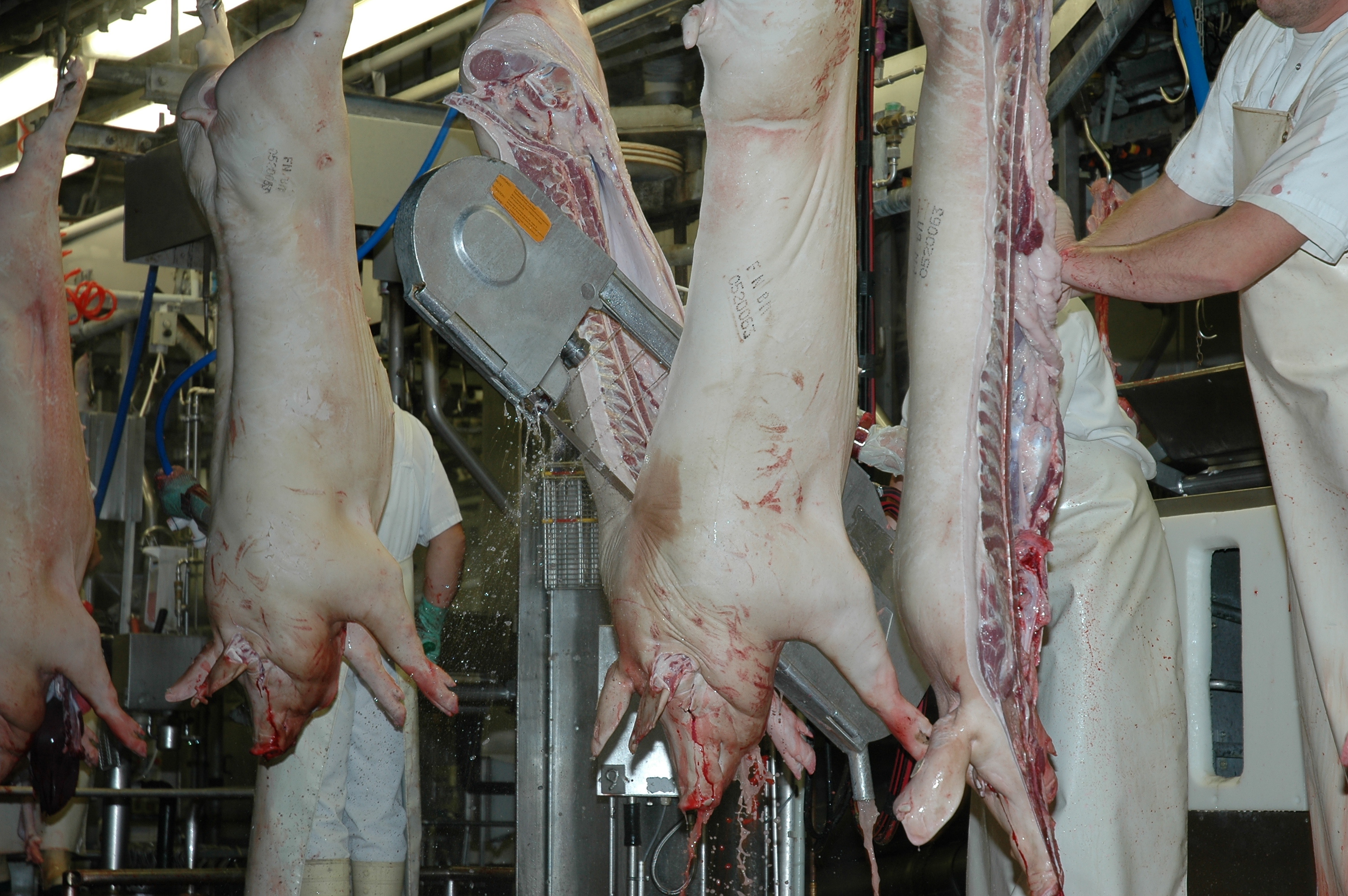



What can pig carcases tell us about farm welfare?
Welfare assessments during production come with time, economic and biosecurity costs, so what are the options for assessing welfare at different stages of the food production chain? Could carcase analysis provide a viable alternative?Across society, concern for animal welfare is increasing, and consumers often want assurances that their pork has come from animals that were reared responsibly. The well-being of pigs on farms is monitored using animal-welfare audits and farm assurance schemes. However, these on-farm assessments take time to conduct, are costly and can present potential biosecurity risks, as auditors travel between farms to carry out their checks. Monitoring pig welfare at abattoirs instead of farms may provide an alternative when conducting large-scale assessments.
Monitoring animal welfare at the abattoir might at first sound counter-intuitive, however, there are many advantages to conducting welfare assessments here, compared to carrying them out on farms (see Table 1). These advantages largely relate to the reduced costs and travel times for inspectors, but also include improved biosecurity conditions and better visibility of the animals during inspections. By utilising data that are already collected by pig abattoirs during carcass inspection, the health and welfare status of large numbers of pigs can be more easily monitored.

© Lauren Edwards
During the slaughter process, each carcass is subjected to a routine meat inspection in which the carcass is examined for signs of illness or injury. These meat inspections were originally developed to detect any disease risks for humans, but are now also used to identify and remove any damaged parts of the carcass that may be unappealing to consumers, such as bruises and scratches. Thus, meat inspections generate large amounts of data on the health and injury status of all pigs sent for slaughter. These data represent an important resource that is currently being used for disease monitoring and epidemiological studies, and could represent an enormous opportunity for monitoring pig welfare.
During carcass inspection, any injuries present can be categorised as having occurred recently (acute), or having occurred some time ago (chronic). By classifying injuries as acute or chronic, we can start to estimate when they happened. Acute injuries that occurred just prior to slaughter are likely to have taken place during transport or lairage, whereas older injuries are indicative of the conditions on farm. A list of the different welfare indicators that could potentially be assessed at slaughter are presented in Table 2. There has been a lot of recent research aimed at validating these measures as reliable indicators of on-farm welfare.

© Lauren Edwards
As we can see from Table 2, there are many conditions that can be detected at the abattoir. However, researchers are still determining which conditions are reliable indictors of pig welfare during transport and on farm. Skin and tail lesions show promise in this regard. One recent study reported that tail and skin lesions that were incurred up to 11 weeks prior to slaughter were still visible when the carcass was inspected, concluding that older healed lesions may be indicative of lifetime welfare on farm (Carroll et al, 2018). Another study was able to relate tail and skin lesions at slaughter to the rates of poor body condition, bursitis and severe tail damage at different production stages on farm (van Staaveren et al, 2017). High rates of sow carcass defects were associated with high rates of sow mortality on farm (Heinonen et al, 2018). These studies all demonstrate the potential of well validated meat-inspection data for assessing on-farm welfare.
While the age of injuries and lesions can indicate whether they occurred on farm or during transport and lairage, determining the age of an injury is not always easy. The colour of lesions and bruises can provide an estimate, with fresh scratches (one hour) appearing redder and darker than old scratches (four hours or more). While bruises will turn brown over time, a precise estimate of their age is difficult without histologically examining the tissues.
As it can be more difficult to determine the age of bruises, it is harder to attribute them to farm or transport sources. One method for determining their source is to compare the rate of bruising between batches of pigs. If the bruising is occurring on farm or during transport, the number of bruises will vary between different farms or transporters. If the bruising is occurring at the abattoir, all batches will have similar rates of bruising.
While the information collected from pigs post-slaughter cannot be used to improve their own welfare, it can be used to improve the welfare of other pigs coming from the same farm or transport operator. Monitoring pig welfare on a large scale would allow the creation of benchmarks for the various welfare indicators that could be shared with farmers. This would allow farmers to compare the welfare of their pigs to those on other farms, which could then provide an incentive for improvement if they were underperforming. As Temple Grandin, professor of animal science at Colorado State University, is fond of saying: we manage what we measure. In addition, receiving a report on the welfare indicators for each batch of pigs would allow farmers to track whether the changes they were making on farm were leading to measurable improvements in their pigs at the abattoir.

The use of meat inspection data from abattoirs as “iceberg indicators” – using representative samples to draw conclusions about the rearing conditions of much larger animal populations – of pig welfare on farm is far from an exact science, and will never completely replace the need for on-farm welfare assessments. While several carcass traits have been related to the housing conditions on farm, there is still a lot of research required to fine tune the inferences that inspectors can make from them.
For meat-inspection data to provide a reliable monitoring system for pig welfare on farm, a systematic approach and further research is required. However, once the best welfare indicators have been determined, meat-inspection data has great potential for improving pig welfare on a wide scale.
| References | ||||
|---|---|---|---|---|
| Carroll, G. A., Boyle, L. A., Hanlon, A., Collins, L., Griffin, K., Friel, M., Armstrong, D. & O’Connell, N. E. | ||||
| (2018) | What can carcass-based assessments tell us about the lifetime welfare status of pigs?. Livestock Science | 214, 98-105 | ||
| Grandin, T. | ||||
| (2017) | On-farm conditions that compromise animal welfare that can be monitored at the slaughter plant.. Meat Science | 132, 52-58 | ||
| Harley, S., More, S., Boyle, L., Connell, N. O. & Hanlon, A. | ||||
| (2012) | Good animal welfare makes economic sense: potential of pig abattoir meat inspection as a welfare surveillance tool.. Irish Veterinary Journal | 65, 11-11 | ||
| Heinonen, M., Bergman, P., Fredriksson-Ahomaa, M., Virtala, A. M., Munsterhjelm, C., Valros, A., Oliviero, C., Peltoniemi, O. & Hälli, O. | ||||
| (2018) | Sow mortality is associated with meat inspection findings.. Livestock Science | 208, 90-95 | ||
| Van Staaveren, N., Doyle, B., Manzanilla, E. G., Calderón Díaz, J. A., Hanlon, A. & Boyle, L. A. | ||||
| (2017) | Validation of carcass lesions as indicators for on-farm health and welfare of pigs.. Journal of Animal Science | 95, 1528-1536 |









